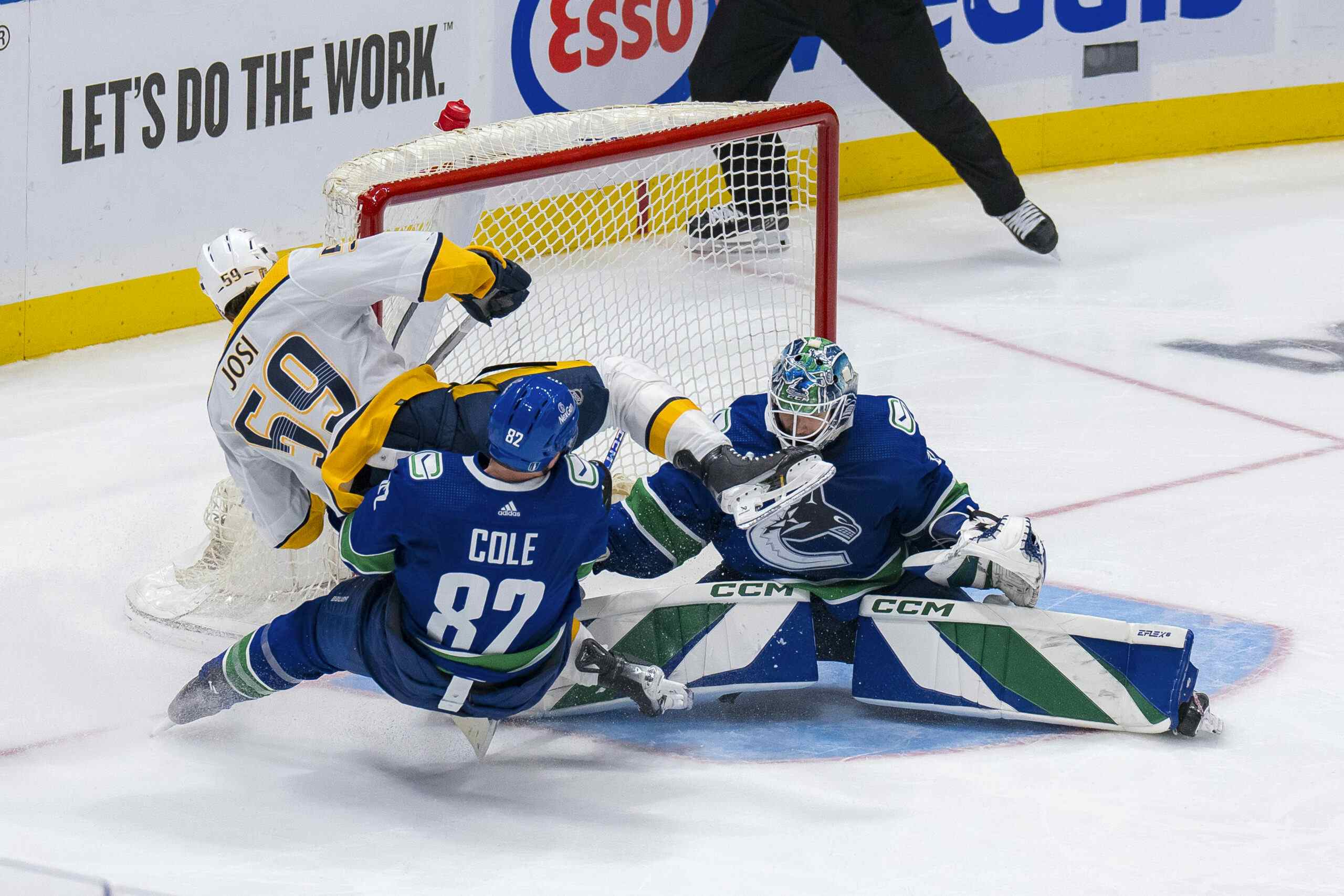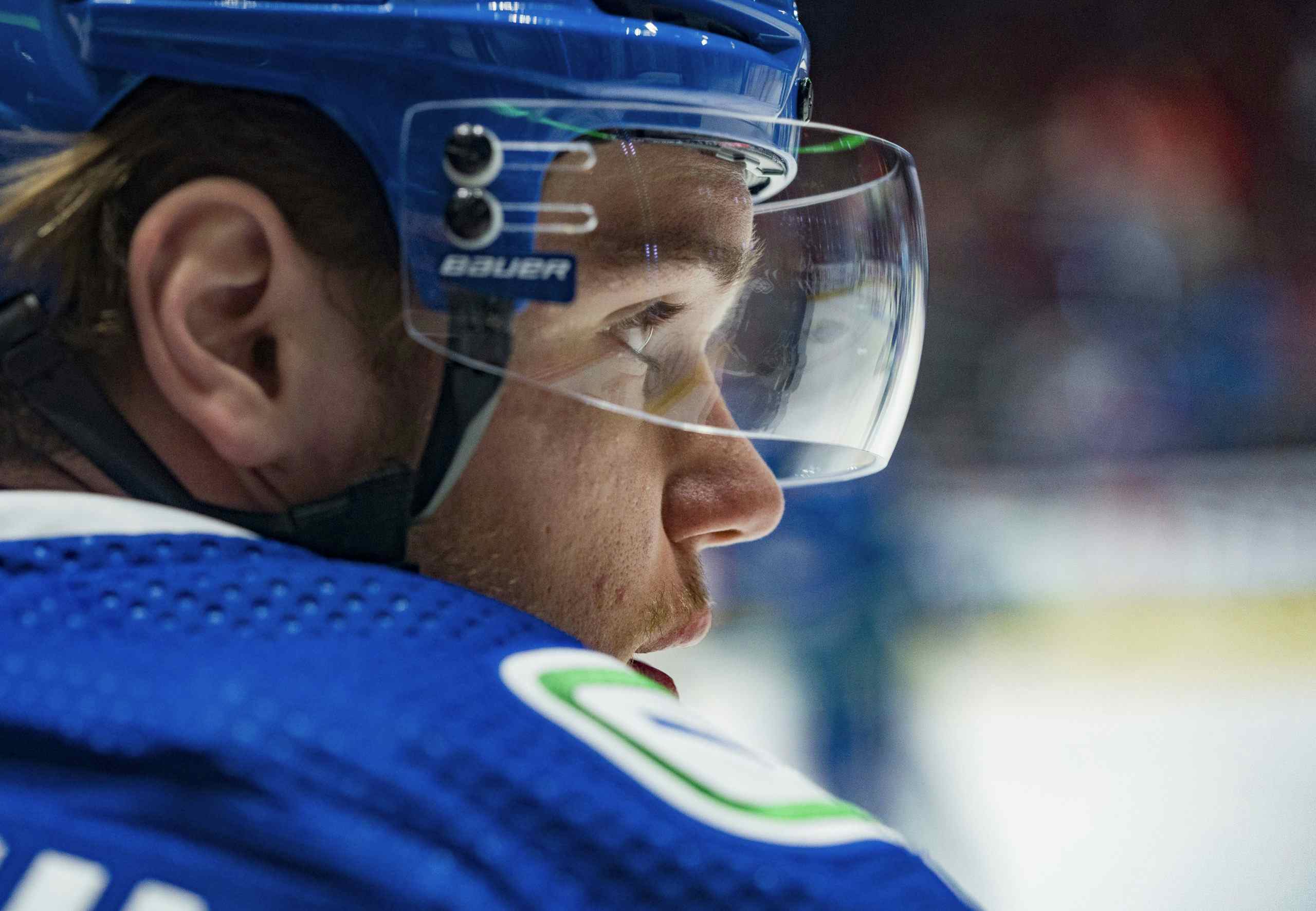Canucks Army Midterm Prospect Rankings: 11-12
7 years ago

Where does the time go? Less than a week ago we kicked off our annual Midterm Prospect Rankings, and today we’re just on the verge of breaking into the top ten. But first, I’ll be taking a look at two intriguing players that just missed the cut.
Before we get into it, let’s quickly review the criteria:
- The player must be 25 years or younger, and
- The player must be eligible for the Calder Trophy next season.
As a result, players that are considered to be “graduated” to the NHL (Brendan Gaunce, Nikita Tryamkin, Jake Virtanen, Anton Rodin) are not eligible.
#12 LUKAS JASEK

No player has the potential to surprise people next season more than Lukas Jasek. Jasek was a Canucks Army favourite at the time of his selection, but his stock, much like his ice time in the Czech Tier 1 league, has fallen precipitously since.
At the time he was selected, Jasek had an expected success percentage of 10% by pGPS, but midway through his third season of professional hockey, that number’s fallen to just above 1%. Out of 58 statistically similar players, only one played over 200 games in the NHL, Petr Prucha.


For those of you that don’t remember, Prucha was one of just six rookies since 2000 to score 30 goals. Unfortunately, he fizzled out from there, running into injury trouble and vanishing from public discourse, leaving his true potential a mystery. That’s an oddly befitting match for Jasek, who’s development has been both frustrating and confusing to track.
Jasek played in four different leagues in his draft +1 season, and has played in three different leagues so far this season. His transaction record is a mishmash of call-ups, demotions, and loan-outs, which more than likely accounts for Jasek’s unimpressive showing by pGPS.
Jasek’s unimpressive success percentage is heavily influenced by the small sample size of games he’s played in the Czech league this season, and the dearth of ice-time he’s received therein. Czech rosters are gigantic, sometimes over double the number of players you’d see in an NHL lineup, and it’s notoriously difficult for young players to get playing time.
Still, it’s at least somewhat encouraging that his team in the Czech league saw enough in him to refuse to release him from his contract. Jasek, for what it’s worth, intended to play in the CHL this season, as he told Canucks Army last summer:
“I wanted to play in the CHL,” Jasek told Canucks Army. “The Canucks wanted (that) also, to watch (me) play there”. “I still have contractual obligations to HC Trinec for another season” Jasek continued “of course, I tried to persuade my general manager to allow (my participation in the Import Draft) but without success”.
It’s for all these reasons that Jasek could surprise fans next season. After two and a half years in the organization, we still have very little idea of what exactly the Canucks have in Jasek. If the Canucks elect to sign him, he’ll be eligible to play in the AHL next season, where he’ll help with the Comet’s lack of talent at forward. It will also be his fourth year of pro hockey, which will give him the inside track on his fellow rookies.
My only chance to get a good look at Jasek was more than likely the same as everyone else’s: at the 2017 World Juniors. Jasek failed to record a point in five games, but lead the team in shots, and was one of their better forwards. He was relied on heavily in the defensive zone, where Jasek held his own against some of the world’s best players in his age group.
At best, Jasek represents a massive long shot to make the NHL, but he’s the rare case of being an actual high-risk high-reward prospect, given his talent level. We really won’t have a good idea of his potential until he comes to North America, so until then, it’s really anyone’s guess.
#11 BRETT MCKENZIE

Clocking in at #11 on our consensus ranking is Brett McKenzie, whom the Canucks selected in the seventh round of the 2016 NHL Entry Draft, 194th overall, fresh off a 53-point performance with the OHL’s North Bay Battalion. With an expected success percentage of 15%, he was one of the Canucks best value picks of the draft. Since then, McKenzie’s done everything to live up to that billing, scoring at just a hair above a point-per-game pace and leading the Battalion in assists and points. This jump in production also caused McKenzie’s expected success percentage to jump to 18%, the highest it’s ever been.


I’ve been a fan of McKenzie from day one. I was the only Canucks Army writer to give McKenzie a vote in our preseason rankings, and I actually had him ranked three slots higher than the consensus. Part of the reason I was drawn to McKenzie is that he’s the rare player that can draw rave reviews from both analytics types and old-school scouts. He’s got all the physical tools to be an NHL player someday, which indicates that he may have more in common with the 18% of his height and production-based matches that became NHL regulars than with the 82%.
I was given the opportunity to see McKenzie in person at the 2016 Young Stars Classic, and while he didn’t particularly stand out, he looked poised and comfortable, as well as being one of the most physically strong players at the tournament, winning multiple puck battles. Some of this was almost certainly due to being one of the older and larger prospects at the tournament, but it’s a good sign, especially given that he’s backed it up with strong play in the OHL this season.
McKenzie doesn’t possess one particular elite skill, but he can do a little bit of everything. He can hit, has a good release, and plays on both special teams for the Battalion. He’s also got a big body, and we all know that’s something scouts gravitate towards. What’s impressed me most about McKenzie from watching game tape from his most recent season is his skating and lateral movement, which he shows off repeatedly in the game highlights from this game against the Flint Firebirds.
McKenzie’s development path is encouraging, but it’s important to keep expectations reasonable, given that he’s in his fourth year of major junior, playing against younger and more inexperienced competition.
When looking through McKenzie’s pGPS matches from the OHL, the vast majority that were able to do make the jump did so as bottom six players.

Even still, McKenzie’s well-rounded game gives him a good shot at developing into a utility player for the Canucks. One that can kill penalties, play a 200-foot game and play up your lineup in the event of an injury. It’s not terribly exciting, but it’s still value added for a player selected in the seventh round. And given that Mckenzie plays a premium position, he may have a leg up on some of his competition to one day make the big club.





